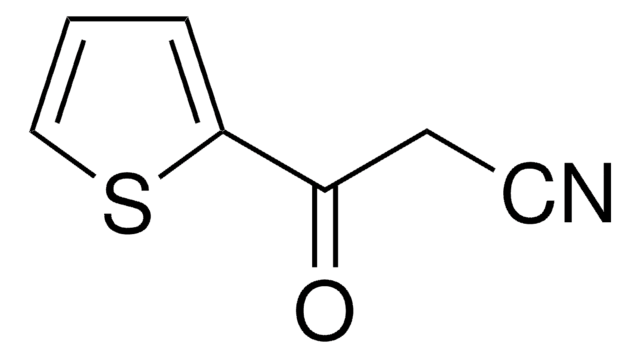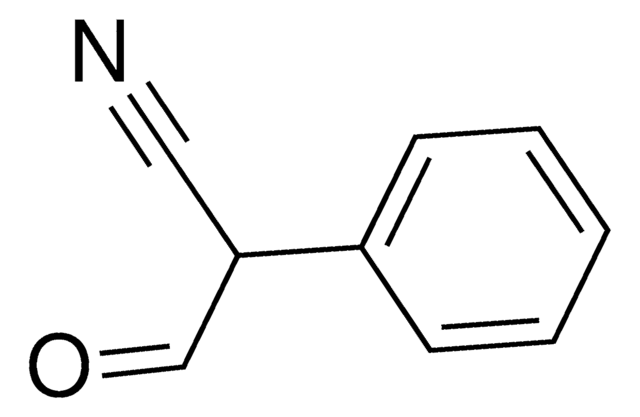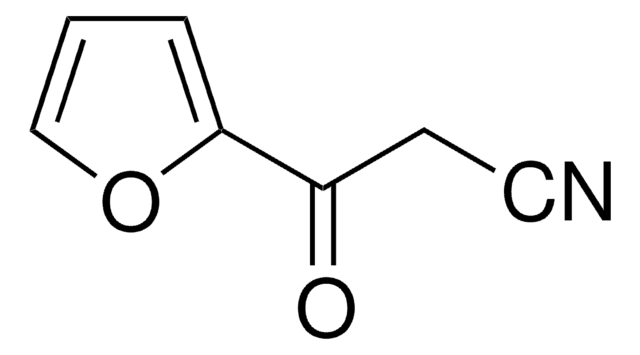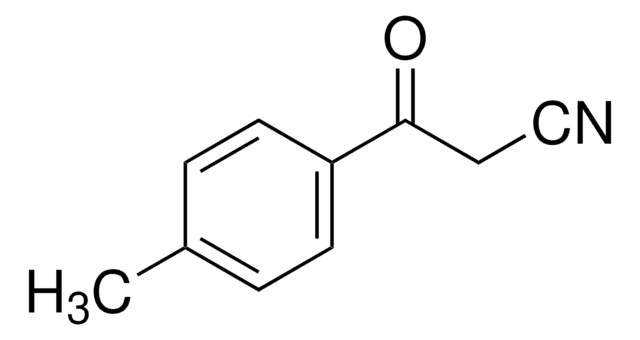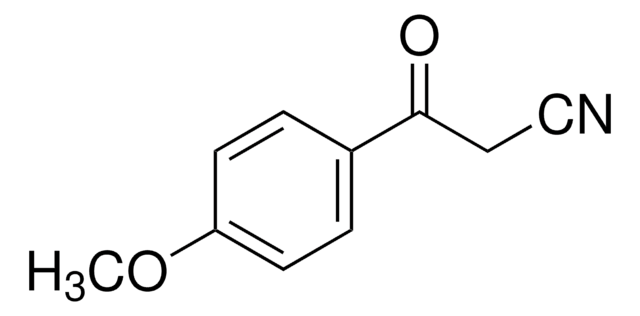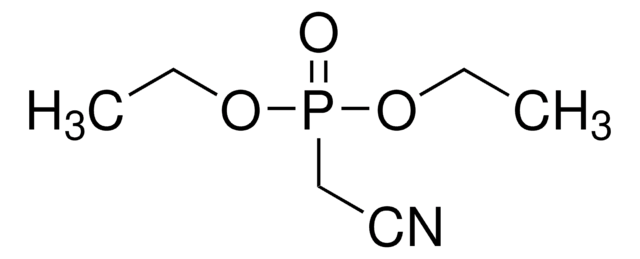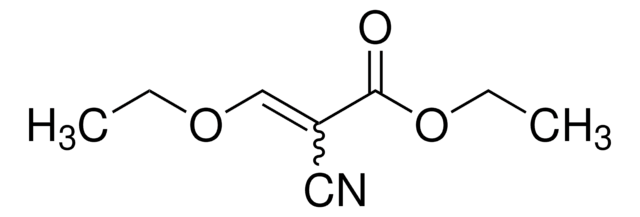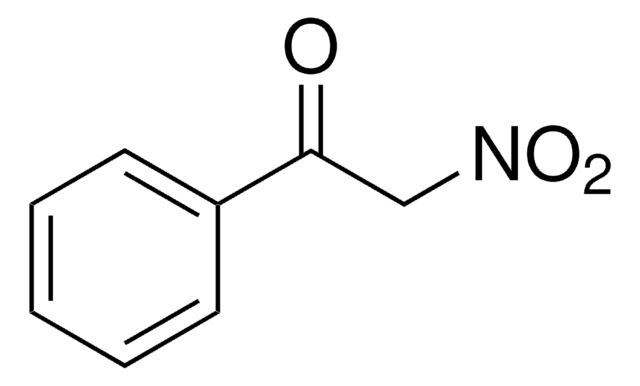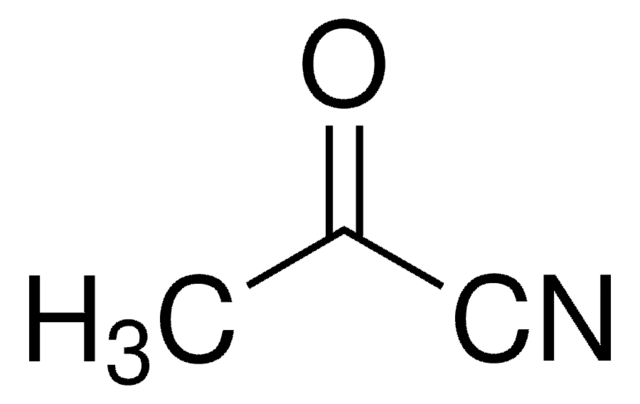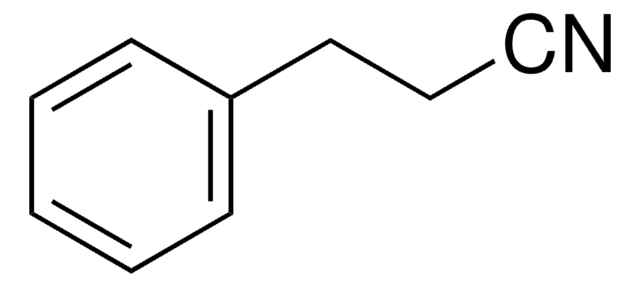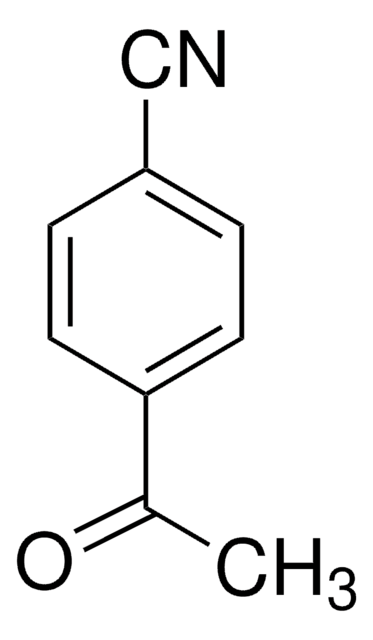272728
Benzoylacetonitrile
99%
Synonym(s):
β-Oxohydrocinnamonitrile
Sign Into View Organizational & Contract Pricing
All Photos(1)
About This Item
Linear Formula:
C6H5COCH2CN
CAS Number:
Molecular Weight:
145.16
EC Number:
MDL number:
UNSPSC Code:
12352100
PubChem Substance ID:
NACRES:
NA.22
Recommended Products
Quality Level
Assay
99%
form
solid
bp
160 °C/10 mmHg (lit.)
mp
82-83 °C (lit.)
SMILES string
O=C(CC#N)c1ccccc1
InChI
1S/C9H7NO/c10-7-6-9(11)8-4-2-1-3-5-8/h1-5H,6H2
InChI key
ZJRCIQAMTAINCB-UHFFFAOYSA-N
Looking for similar products? Visit Product Comparison Guide
Related Categories
Application
Benzoylacetonitrile was used in the synthesis of substituted naphtho[1,8-bc]pyrans. It was also used as building block in the preparation of 4H-pyrans, 2-pyridones, furans and carbocyclics.
Signal Word
Warning
Hazard Statements
Precautionary Statements
Hazard Classifications
Acute Tox. 4 Dermal - Acute Tox. 4 Inhalation - Acute Tox. 4 Oral - Eye Irrit. 2 - Skin Irrit. 2 - STOT SE 3
Target Organs
Respiratory system
Storage Class Code
11 - Combustible Solids
WGK
WGK 3
Flash Point(F)
Not applicable
Flash Point(C)
Not applicable
Personal Protective Equipment
dust mask type N95 (US), Eyeshields, Gloves
Choose from one of the most recent versions:
Already Own This Product?
Find documentation for the products that you have recently purchased in the Document Library.
Customers Also Viewed
Heterocycles, 20, 2393-2393 (1983)
Journal of the Chemical Society. Perkin Transactions 1, 2581-2581 (1985)
L P Davies et al.
Life sciences, 34(22), 2117-2128 (1984-05-28)
A large number of nitrogen heterocycles structurally related to caffeine and theophylline have been tested for activity as adenosine antagonists. Preliminary screening, utilizing displacement of [3H]N6-phenylisopropyladenosine (PIA) binding to rat brain membranes, identified several pyrazolo[3,4-d]pyrimidines with potential antagonist activity. These
Xing Tan et al.
Journal of the American Chemical Society, 134(39), 16163-16166 (2012-09-20)
The cascade oxidative annulation reactions of benzoylacetonitrile with internal alkynes proceed efficiently in the presence of a rhodium catalyst and a copper oxidant to give substituted naphtho[1,8-bc]pyrans by sequential cleavage of C(sp(2))-H/C(sp(3))-H and C(sp(2))-H/O-H bonds. These cascade reactions are highly
Journal of the Chemical Society. Perkin Transactions 1, 1681-1681 (1985)
Our team of scientists has experience in all areas of research including Life Science, Material Science, Chemical Synthesis, Chromatography, Analytical and many others.
Contact Technical Service